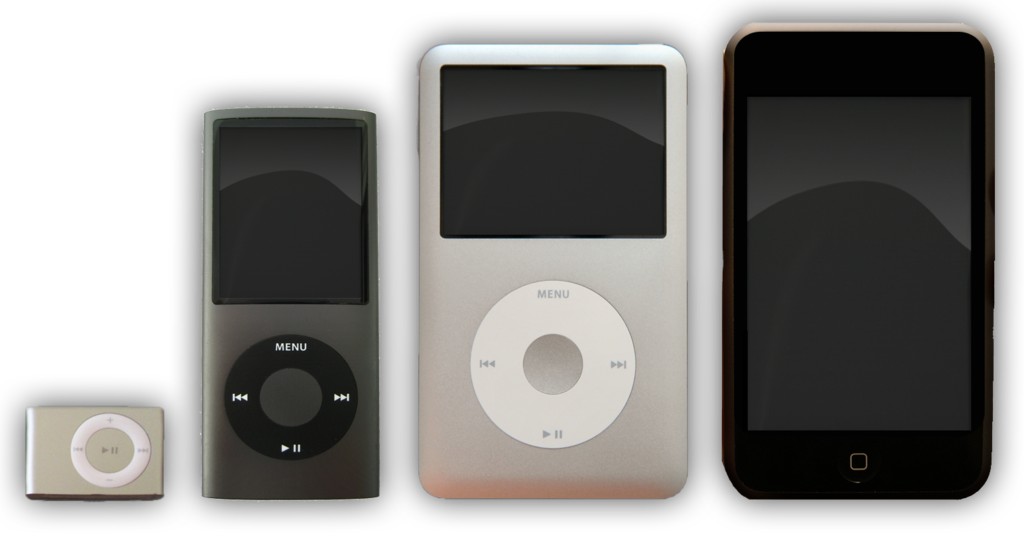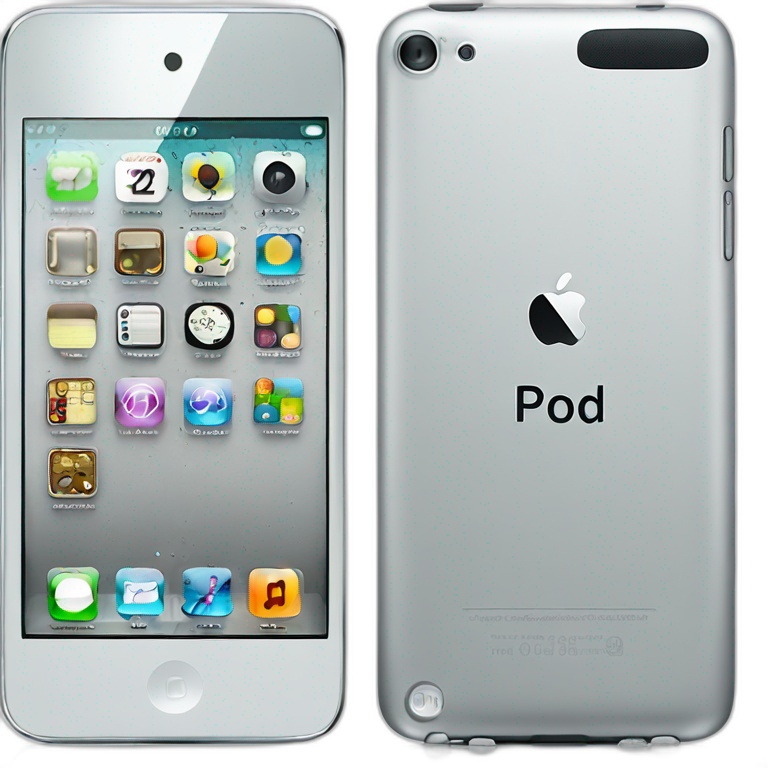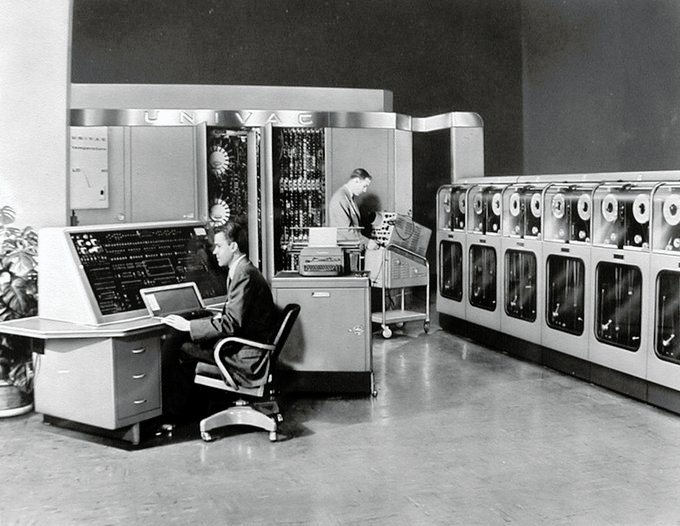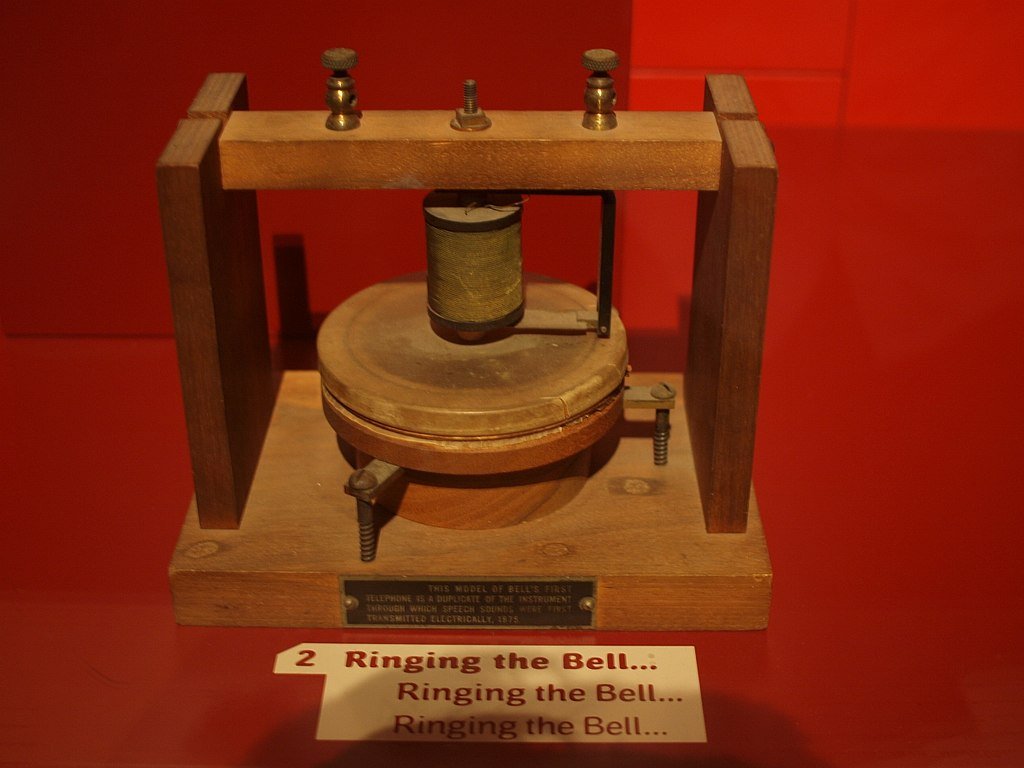In the early 2000s, the iPod reigned supreme as a revolutionary portable music player, transforming the music-listening experience. However, over time, this iconic device gradually waned in prominence. This blog post will dissect the factors that led to the downfall of the iPod, examining technological shifts, market dynamics, and evolving consumer preferences that contributed significantly to its decline. Before we delve into the specifics, let’s address a fundamental question:
Table of Contents
Why did the iPod fail?
The iPod’s decline can be attributed to changing consumer expectations. Initially successful for its standalone music player concept, the iPod faced challenges as consumers increasingly demanded more versatile, interconnected devices—the closed ecosystem limited adaptability in an era favoring seamless connectivity. Smartphones, emerging as multifunctional hubs, outpaced the iPod by integrating various services. Furthermore, the rise of the Internet of Things accentuated the need for devices fitting into broader technological landscapes. The iPod’s failure to evolve in line with these trends marked a shift in consumer preferences towards integrated, connected experiences, contributing to its diminished relevance.

Why did iPods stop?
iPods faced obsolescence due to changing consumer habits and technological advancements. The rise of smartphones, offering multifunctionality and seamless integration, diminished the need for standalone music players. Consumers preferred devices that could handle diverse tasks, making the iPod’s singular focus on music playback less appealing. Additionally, streaming services became prevalent, reducing reliance on locally stored music. Apple, the creator of iPods, shifted its focus to iPhones and other innovative products, acknowledging the diminishing market for dedicated music players. Consequently, in 2014, Apple discontinued the iPod Classic, and subsequent iPod models faded away as the company adapted to evolving consumer demands.
What made the iPod lose its popularity?
The decline in the iPod’s popularity can be attributed to shifting consumer preferences toward multifunctional devices. As smartphones emerged, offering integrated features, including music playback, the standalone nature of the iPod became a limitation. Consumers sought all-in-one solutions, and the closed ecosystem of the iPod, relying heavily on iTunes, struggled to compete with the seamless connectivity and versatility of smartphones. The rise of streaming services further diminished the need for dedicated music players. Ultimately, the iPod’s singular focus on music in an era of increasing demand for multifaceted functionality led to its decline in popularity.
With this question in mind, we’ll navigate deeper into the blog, exploring the intricate details that marked the journey of the iPod from a cultural icon to a fading memory.
Technological Evolution: Rise of Smartphones
The technological evolution leading to the rise of smartphones and the subsequent decline of dedicated music players like the iPod is a multifaceted process that encompasses several key factors. Here’s a detailed explanation:
Convergence of Technologies
- The traditional iPod was designed primarily as a portable music player with a focus on delivering an exceptional music-listening experience. However, technological advancements led to the convergence of various functionalities into a single device.
- Smartphones emerged as a result of integrating diverse technologies such as telephony, computing, camera capabilities, internet connectivity, and multimedia playback into one compact device.
Multifunctionality and Convenience
- Smartphones offer users a multifunctional experience, allowing them to perform various tasks beyond just listening to music. Users could now make calls, send messages, browse the internet, capture photos and videos, play games, and more, all from a single device.
- The convenience of having an all-in-one device that could replace multiple gadgets became a compelling reason for consumers to choose smartphones over dedicated music players.
User Preferences and Behavior
- As consumer behavior evolved, there was an increasing preference for devices that offered versatility and convenience. People wanted a device that could adapt to their changing needs and serve multiple purposes seamlessly.
- The shift towards smartphones reflected a desire for a consolidated and streamlined experience, where users could carry just one device that met their communication, entertainment, and productivity needs.
Integration of Music Features in Smartphones
- Recognizing the changing landscape, smartphone manufacturers, including Apple, began integrating features similar to dedicated music players into their devices.
- Apple, having experienced success with the iPod, strategically incorporated iPod-like functionality into their iPhones. This meant users could still enjoy a high-quality music experience on their smartphones, eliminating the need for a separate music player.
Connectivity and Cloud Services
- Smartphones provide seamless connectivity options, allowing users to access their music libraries from the cloud. This eliminated the need for physical storage on the device itself, making it easier for users to manage and enjoy their music collections.
- The integration of cloud services further enhanced the appeal of smartphones as users could easily sync and access their music across multiple devices.
Market Dynamics and Competition
- The competitive landscape in the technology industry played a crucial role. As smartphones gained popularity, competition among manufacturers intensified. Companies that adapted quickly to market trends and consumer preferences flourished.
- Dedicated music players faced challenges in staying competitive, given the rapidly evolving features and capabilities offered by smartphones.
Streaming Services: The Dawn of a New Era
The rise of music streaming services indeed represents a pivotal moment in the music industry, transforming how people access and consume music. Here’s a detailed exploration of the factors contributing to this shift:
Paradigm Shift: From Ownership to Access
- Music streaming services like Spotify and Apple Music revolutionized the music industry by providing users with instant access to vast libraries of songs without the need for physical storage.
- The transition from owning individual tracks to subscribing for unlimited access appealed to consumers, offering flexibility and eliminating the constraints of the device storage.
On-the-Go Convenience and Dynamic Discovery
- The unparalleled convenience of on-the-go music access from smartphones, tablets, and computers fueled the rise of streaming services.
- Personalized recommendations, dynamic playlists, and social sharing features transformed the music discovery experience, enabling users to explore new genres and artists seamlessly.
Adaptability to Connectivity Trends
- Streaming services aligned with the trend of widespread internet connectivity, allowing users to flow music in real-time without relying on physical media or facing storage limitations.
- The adaptability of streaming platforms to evolving connectivity standards contributed to their widespread adoption, rendering traditional music players like the iPod less relevant in the face of these dynamic, connected experiences.
Decline in Standalone MP3 Players Market
As smartphones became ubiquitous, a seismic shift occurred in consumer preferences, leading to the decline of standalone MP3 players. This transformation marked a broader trend that reshaped the dynamics of the consumer electronics market.
Smartphone Ubiquity and Decline of Dedicated Players
- The decline of standalone MP3 players, including the iconic iPod, mirrored the widespread adoption of smartphones. The all-in-one capabilities of smartphones, encompassing music playback, communication, and various other functions, diminished the demand for dedicated music players.
- As consumers increasingly embraced the convenience of having multifunctional devices, the standalone MP3 player market faced a decline in demand.
Competitor Challenges and Product Diversification
- Competitors in the standalone MP3 player market, once thriving alongside the iPod, encountered difficulties as the industry landscape evolved. Many competitors had to discontinue their MP3 player lines due to diminishing sales and shifting consumer preferences.
- In response to the changing market dynamics, some competitors diversified into other product categories to remain relevant, highlighting the broader impact of the decline in standalone MP3 players on the industry.
Consumer Shift to Multifunctional Devices
- The fundamental change in consumer behavior played a pivotal role in the decline of standalone MP3 players. The preference for multifunctional devices, exemplified by the rise of smartphones, emphasized the diminishing appeal of single-purpose gadgets like the iPod.
- The shift signaled a broader trend where consumers sought integrated solutions that could cater to a variety of needs, relegating standalone MP3 players to a less prominent role in the evolving landscape of consumer electronics.
Design Stagnation: Fading Innovation in the iPod’s Evolution

The iPod, once a trailblazer in the realm of portable music players, faced a critical challenge in its later iterations — a notable lack of groundbreaking innovations in design. While the original iPod, with its click wheel and white earphones, revolutionized how people consumed music on the go, subsequent models struggled to captivate consumers with fresh, forward-thinking features.
Pioneering Origins vs. Struggling Evolution
- The original iPod, featuring the innovative click wheel and sleek white earphones, set a high standard for portable music players.
- Subsequent iterations, however, failed to introduce equally groundbreaking features, making the iPod’s design appear stagnant in comparison to more dynamic competitors.
Competitor Advancements and Modern Features
- Rival companies embraced cutting-edge technology, introducing touchscreens, intuitive interfaces, and other modern functionalities in their devices.
- The absence of these features in the iPod made it less appealing to consumers seeking seamless integration of style and advanced technology in their gadgets.
Shifting Consumer Expectations
- Consumers increasingly desired devices that not only provided excellent music playback but also reflected contemporary aesthetics and offered a user-friendly experience.
- The iPod’s design, rooted in its early success, struggled to adapt to changing consumer expectations, contributing to a decline in its market relevance.
Impact on Market Perception
- The lack of substantial design evolution in the iPod influenced how consumers perceived the product.
- As other devices embraced modernity, the iPod’s design began to be associated more with nostalgia than with cutting-edge technology, impacting its appeal in the market.
Competitive Landscape and Decline
- In a rapidly evolving tech landscape, the iPod faced challenges in maintaining its competitive edge against devices that not only met but exceeded consumer expectations in terms of both form and function.
- The failure to keep pace with the technological advancements and modern design aesthetics of competitors played a pivotal role in the decline of the iPod in the market.
Changing Consumer Preferences: Connectivity and Integration

In the world of consumer technology, user preferences continually evolve, shaping the trajectory of product development. This evolution is particularly evident in the paradigm shift towards interconnected digital experiences, where seamless connectivity has become a hallmark of modern consumer expectations.
Changing Consumer Preferences
Seamless Connectivity
In the modern era, the emphasis on seamless connectivity reflects a consumer base that values convenience and efficiency. Devices that can effortlessly communicate and integrate cater to the desire for a more streamlined user experience. This preference is evident in the increasing popularity of products that facilitate easy data sharing, content streaming, and synchronization across various platforms.
Shift from Standalone to Interconnected Devices
The transition from standalone devices, typified by the success of the iPod, to multifunctional and interconnected devices like smartphones signifies a fundamental shift in consumer expectations. Today’s users seek devices that go beyond isolated functionalities, preferring gadgets that serve as central hubs capable of integrating various services seamlessly. This shift aligns with the contemporary lifestyle where versatility and connectivity are paramount.
Challenges Faced by Standalone Devices
Isolated Ecosystem of the iPod
The iPod’s triumph lay in its closed ecosystem, where users acquired and synced content exclusively through iTunes. However, this closed nature became a drawback as consumers yearned for more diverse digital experiences. The isolated ecosystem hindered adaptability in a world where connectivity became the norm, emphasizing the importance of open systems that allow for a more comprehensive integration with other devices and services.
The Role of Smartphones
Smartphones emerged as pivotal solutions to the challenges faced by standalone devices. Serving as central hubs, smartphones seamlessly integrated with various services and devices, breaking down the barriers of closed ecosystems. The adaptability of smartphones to the evolving consumer landscape met the demand for interconnected experiences, offering a multifaceted solution that went beyond the limitations of standalone devices.
Impact of the Internet of Things (IoT)
Rise of Interconnected Devices
The advent of the Internet of Things (IoT) heightened the significance of seamless connectivity. The IoT transformed everyday devices into interconnected entities, emphasizing the need for products that seamlessly fit into this broader technological landscape. Consumers now expect their gadgets to participate in this network, allowing for enhanced functionality through interconnected data sharing and communication.
Consumer Demand for Synchronized Experiences
As the technological ecosystem evolves, consumers increasingly demand synchronized experiences across their devices. This demand influences the design and development of products, encouraging manufacturers to prioritize connectivity and integration. Gadgets that work together harmoniously, facilitating smooth transitions between various tasks and environments, are now at the forefront of consumer preferences.
The demise of the iPod can be attributed to a combination of technological evolution, the rise of smartphones, the advent of music streaming services, the decline in the standalone MP3 player market, design stagnation, and changing consumer preferences. While the iPod played a pivotal role in shaping the digital music landscape, it ultimately succumbed to the relentless march of technological progress.
As we bid farewell to the era of standalone music players, it’s essential to recognize the iPod’s impact on how we consume and experience music. Its legacy lives on, not as a relic of the past, but as a symbol of a bygone era when a small, sleek device with a click wheel changed the way we carried and listened to our favorite tunes.














